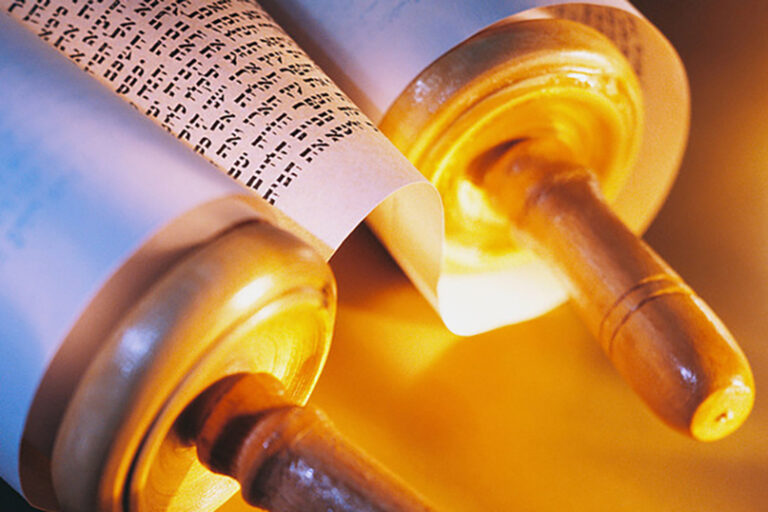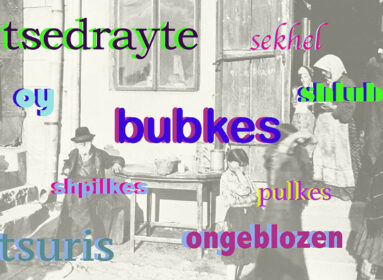
By Rabbi Tzvi Harsh Weinreb
The world did not know that he was a mystic. He was an accomplished diplomat, who knew how to deal with people in positions of great power. Some characterized him as a shrewd, and even manipulative, manager of men. His name was Dag Hammarskjold, and he was the second Secretary-General of the United Nations.
He died in an airplane crash in September of 1961 and was posthumously awarded the Nobel Peace Prize. It was as an astute and successful politician that the world knew him.
It was only after his tragic and untimely death that his personal journal was discovered. It was subsequently published under the title Markings, and it revealed a rare depth of introspection, which some described as poetic, whereas others saw in it poignant expressions of mystical experiences.
For me, Hammarskjold was but a twentieth-century example of my own favorite type of hero, the person who combines worldly skills with a private spiritual essence. He was a man who lived in the world of action, dealing with the obstinate problems of international relations, but he drew his inspiration from sources within his innermost being.
The Jewish biblical tradition knows of quite a few heroes of this type—men who were engaged in the affairs of the world, but also in touch with the deep wellsprings of their souls. Surely, the Patriarch Abraham was one such person, and King David was clearly another.
Another twentieth-century example of an individual who could harmonize his profound inner inspiration with the demands of life as a public figure was Rabbi Abraham Isaac Kook, the first chief Rabbi of the Land of Israel, of whom I have written frequently in this weekly column. He too was characterized by many as a mystic, and indeed his written works testify to his mystical bent. But he was engaged in public affairs in an era of history which demanded political acumen, diplomatic skill, and the courage to act upon religious and nationalistic convictions.
Rav Kook’s commentary on a passage in this week’s Torah portion, Parshat Tzav (Leviticus 6:1-8:36), offers a very creative analysis of the symbolism of the Temple sacrifices which illustrates the combination of inner inspiration and outer action which I find so fascinating, so rare, and so very necessary.
At the beginning of the parsha, we read of the olah offering, the olah being that sacrifice which was totally consumed by the fire upon the altar. As we read the details of this offering, we learned that its service involved three different locations, with descending sanctity:
1. Upon the altar, of which we read “…It is burned upon the altar all night until morning, while the fire on the altar is kept going on it.” (Leviticus 6:2)
2. Next to the altar, of which we read “The priest… shall take up the ashes to which the fire has reduced the burnt offering on the altar, and place them beside the altar.” (ibid. 6:3)
3. Outside the camp, of which we read “He shall then take off his vestments and put on other vestments, and carry the ashes outside the camp…” (ibid. 6:4)
We then read that “the fire on the altar shall be kept burning, not to go out” and that “every morning the priest shall feed wood to it.” (ibid. 6:5)
Rav Kook sees the three different locations as metaphors for three different stages which are necessary in what he calls the prophetic life, but which we can readily apply to the life of every human leader.
The first stage is “a blaze of sacred flames inside the human soul,” corresponding to the fire on the altar. This is the deep inner experience which can be superficially described as introspective insight, but which is in truth a mystical moment.
The prophet, or genuine leader, must not allow that experience to remain buried internally. He must raise it to the surface of his being and integrate these “flames” into his external character and unique personality. This integration is the second stage.
But he cannot stop there. He must now take the person whom he has become by virtue of incorporating the profound spiritual experiences into his very human self and connect to the outside world, far away from the mystical cocoon which he has heretofore enjoyed.
In this third stage, when he engages the real world with all its imperfections, he must be ready to change his vestments. He must put on not only new clothing but a new persona. In the words of the Talmud (Shabbat 114a), “The clothes worn by a servant while cooking for his master should not be used when serving his master wine”.
Yet, even during this third stage of interaction with the mundane affairs of the world, the fires on the altar continue to burn. The sources of warmth, illumination, and inspiration are ever present, even if they are in some manner far removed.
And the prophet, or leader, must ever seek to renew himself, by returning each and every morning to the altar’s hearth, to place new kindling wood there, and to rejuvenate his soul.
This brilliant application of the detailed laws of the Temple sacrifices to the psyche of the prophet/leader can be found in the first volume of Rav Kook’s commentary on the Siddur, or daily prayer book, Olat Re’iyah. It is masterfully summarized in Rabbi Chanan Morrison’s Gold from the Land of Israel.
Some readers might find it odd, and others might even find it improper, for me to be comparing the saintly Rabbi Kook to the worldly Dag Hammarskjold. But I have long followed Maimonides’ advice to accept the truth from every source, and I find much spiritual truth in the words of this Swedish diplomat.
This was a man wise enough to say, “The longest journey is the journey inwards.”
This was a man sufficiently spiritual to say, “God does not die on the day when we cease to believe in Him, but we die on the day when our lives cease to be illumined by the steady radiance, renewed daily, of a wonder, the source of which is beyond all reason.”
This was a man who could offer us this sage advice: “In our age, the road to holiness necessarily passes through the world of action.”
Rav Kook, using the ritualistic terminology of the ancient Temple sacrifices to be found in this week’s Torah portion, delivered a similar message, and offered us the identical sage advice: “The road to holiness passes through the world of action.”
But he would add, “And back again!”
Rabbi Tzvi Hersh Weinreb is the Executive Vice President, Emeritus of the Orthodox Union.







 Southern New England Jewish Ledger
Southern New England Jewish Ledger














